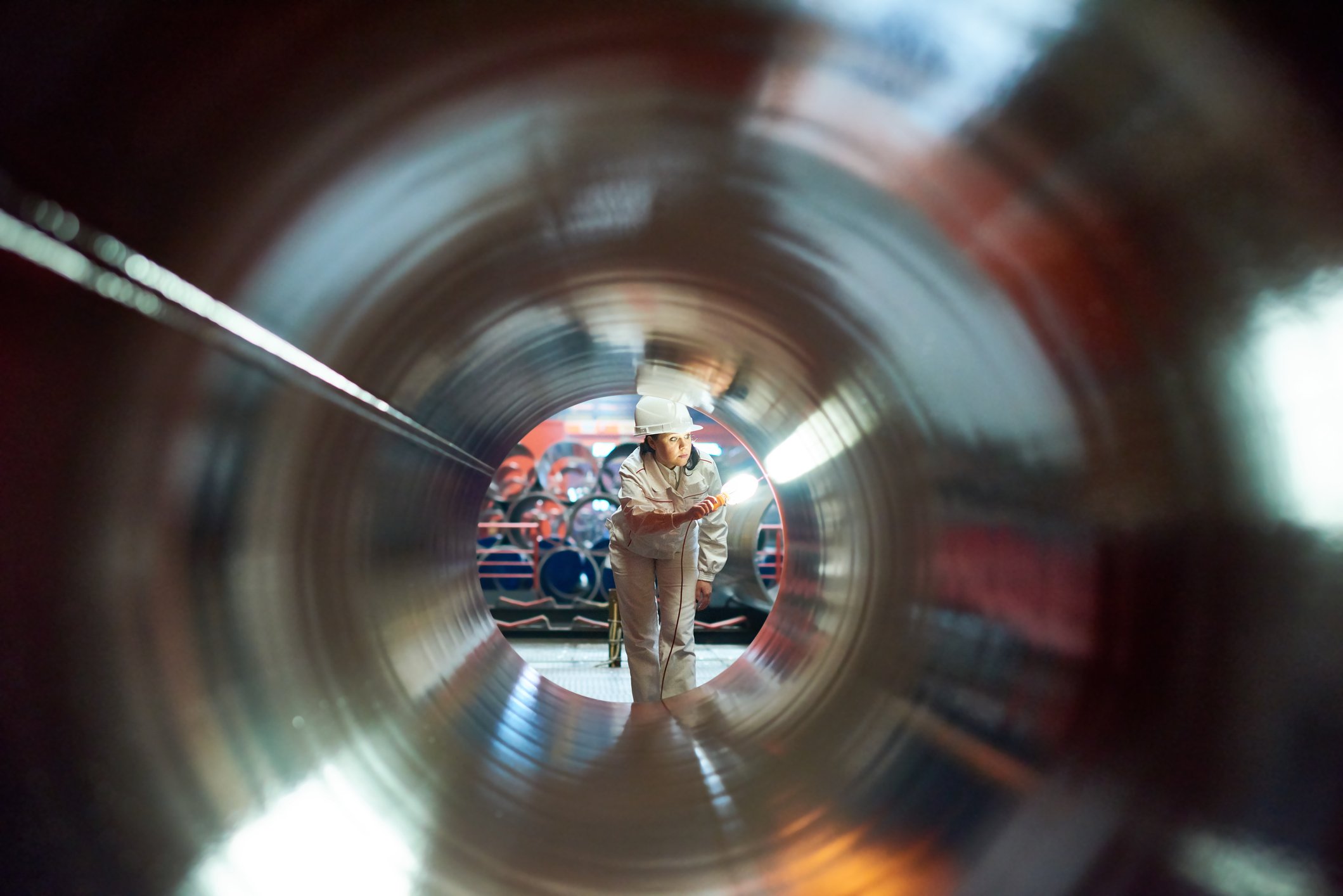Targa Resources (TRGP +0.06%) is on the cusp of turning a crucial corner. The energy company has invested about $4 billion over the past two years to expand its midstream infrastructure so that it can support the growth of its customers. Those projects started coming online during the third quarter, fueling a notable uptick in its cash flow.
That acceleration should continue throughout 2020, which was one of four key catalysts its management team pointed out on the third-quarter conference call. Those drivers should significantly improve the long-term sustainability of its 9.9%-yielding dividend.

Image source: Getty Images.
1. Our growth projects are finally coming online
Targa's CEO, Joe Bob Perkins, started the discussion of what lies ahead:
We're beginning to benefit from numerous major projects now online most of which began over two years ago. This year we completed and commenced operations on approximately $4 billion worth of projects. Projects which have successfully transformed Targa into a leading integrated midstream company. These completed projects and the cash flow from these projects positions Targa very well. Our balance sheet and cash flow profile are expected to strengthen meaningfully as we move forward, and we will capture improved returns on capital benefiting from our integrated platform and lower capital spend.
Investors caught a glimpse of the impact of the company's expansion program during the third quarter, as cash flow surged nearly 20% over the second quarter. That helped improve its dividend payout ratio from 122% of its cash flow to 102%. That number should continue declining in 2020 as the company experiences the full benefits of all the projects it completed during the third quarter, as well as those that will come online during 2020. In its view, its EBITDA should grow from around $1.5 billion this year to about $2 billion in 2020.
2. Our capital spending is coming down sharply
Targa invested $2.4 billion on capital projects this year. However, with most of its largest ones now in service, company President Matt Meloy noted that "based on current assumptions, our preliminary outlook for 2020 net growth capex [capital expenditures] is approximately $1.2 billion to $1.3 billion." That significant decline in capital spending will give Targa much more financial flexibility next year.
3. Our cash flow is becoming much more stable
One of the key characteristics of all the projects Targa is building is that long-term, fee-based contracts underpin them, meaning they'll produce very steady cash flow. That's noteworthy since Targa has much more direct exposure to commodity prices than many of its peers. At the beginning of this year, for example, fees supplied only about 66% of its earnings.
However, that number will significantly improve next year. Not only will it benefit from all its fee-based expansion projects, but as Meloy also noted:
We also have a key strategic initiative under way, which includes increasing our fee based margin across our gathering and processing business. We continue to pursue opportunities with our customers to review current and prospective commercial arrangements and have had recent success in converting certain percentage of proceeds arrangements to fee-based arrangements and have also added incremental fee-based elements. We now estimate our fee based margin to increase in 2020, to be about 80% of our forecasted operating margin.
As a result, its future cash flow will be much steadier, which will further enhance its financial profile.

Image source: Getty Images.
4. We're taking additional steps to shore up our balance sheet
Because Targa is paying out more than 100% of its cash flow to support its high-yielding dividend, it has had to borrow money and sell assets to fund its expansion projects. Those borrowings have pushed its leverage ratio up to 4.7 times debt-to-EBITDA as of the end of the third quarter. While that complied with its lender covenant that this metric is below 5.5, it's on the high side for a midstream company, since most want their leverage below 4.0.
That number will naturally come down in the coming months as Targa's recently completed expansion projects grow its EBITDA. However, the company is taking additional steps to shore up its financial position. CFO Jen Kneale noted:
We also continue to evaluate and execute asset sales as a catalyst to reduce leverage. During the third quarter, we closed on the sale of an equity method investment for $70 million. ... We are evaluating the potential divestiture of our crude gathering business in the Permian, which includes crude gathering and storage assets in both the Delaware and Midland basin.
The company has since signed a deal to sell those Delaware assets for $135 million, which should close by year's end. That transaction, as well as the potential sale of its Midland crude assets and other ones, will enable the company to get its balance sheet into a stronger position more quickly.
Set up for high-octane total returns in 2020
The continued volatility in the oil and gas market, when combined with Targa's weakening financial position resulting from its heavy borrowing to fund its expansion program, has weighed on its stock, which is down about 18% over the past year. However, with those expansion projects starting to pay dividends, its spending coming down, its cash flow becoming more stable, and its balance sheet on track to improve, shares could bounce sharply in 2020. Add that upside potential to its nearly 10%-yielding dividend, and Targa could generate substantial total returns in the coming year.





